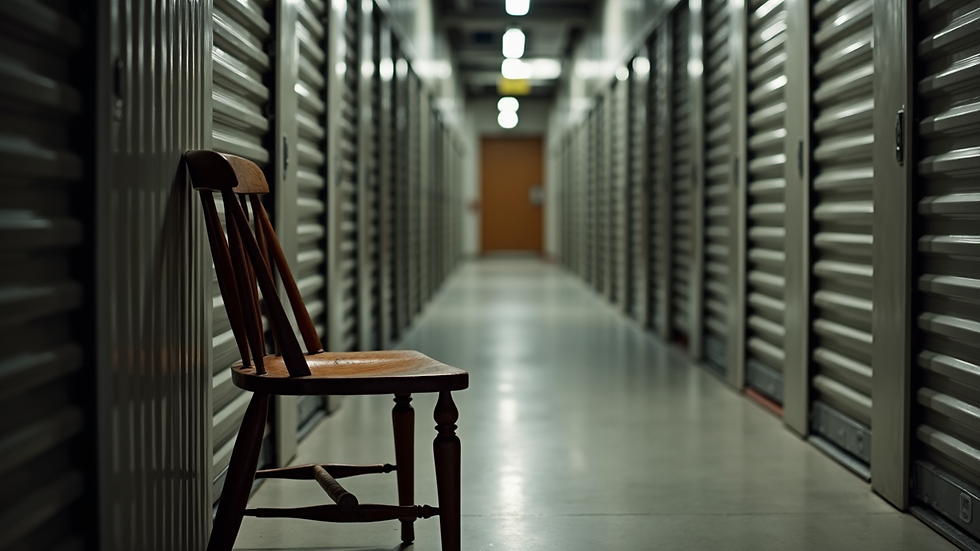Protect Your Belongings with Climate-Controlled Storage
- Jeff Lawrence
- Aug 18
- 4 min read
When it comes to storing your valuable items, not all storage solutions are created equal. Some belongings require special care to maintain their condition over time. Temperature sensitive storage is essential for protecting items that can be damaged by extreme heat, cold, or humidity. Whether you are storing antiques, electronics, artwork, or important documents, choosing the right storage environment can make all the difference.

Climate-controlled storage unit designed to protect sensitive belongings
Why Temperature Sensitive Storage Matters
Many items are vulnerable to changes in temperature and humidity. For example, wooden furniture can warp or crack, electronics can malfunction, and photographs can fade or stick together. Temperature sensitive storage helps maintain a stable environment, preventing damage caused by fluctuating conditions.
Here are some common items that benefit from temperature sensitive storage:
Wooden furniture and antiques: Wood expands and contracts with temperature changes, which can cause cracks or splits.
Electronics: Excessive heat or moisture can damage circuits and components.
Artwork and photographs: Sensitive to humidity and temperature, which can cause fading, mold, or warping.
Musical instruments: Wood and strings are affected by temperature and humidity changes.
Important documents and books: Paper can become brittle or moldy in poor conditions.
Using temperature sensitive storage ensures these items remain in optimal condition, especially during seasonal changes or long-term storage.
Benefits of Temperature Sensitive Storage for Your Valuables
Choosing temperature sensitive storage offers several advantages that go beyond just protecting your belongings:
Consistent environment: The temperature and humidity are controlled to stay within safe ranges.
Reduced risk of mold and mildew: Proper humidity control prevents mold growth.
Protection from extreme weather: Items are shielded from heat waves, freezing temperatures, and moisture.
Peace of mind: Knowing your valuables are stored in ideal conditions reduces stress.
Improved longevity: Items last longer and maintain their value.
For example, if you store your vintage guitar in a regular storage unit, it might warp or lose its tone due to humidity. In a temperature sensitive storage unit, the environment is carefully regulated to keep the instrument in perfect shape.

Antique wooden chair preserved in temperature sensitive storage
How much does climate control storage cost?
The cost of climate controlled storage varies depending on several factors such as location, unit size, and facility amenities. On average, you can expect to pay between 20% to 50% more than a standard storage unit. This premium covers the technology and maintenance required to regulate temperature and humidity.
Here are some pricing considerations:
Unit size: Larger units cost more, but the price per square foot may decrease.
Location: Urban areas or regions with extreme weather may have higher rates.
Duration: Long-term rentals sometimes offer discounted rates.
Facility features: Security, accessibility, and additional services can affect pricing.
For example, a 10x10 climate controlled unit might cost $100 to $150 per month, while a non-climate controlled unit of the same size could be $70 to $100. It’s important to weigh the cost against the value of protecting your sensitive items.
If you want to explore options, consider checking out climate controlled storage facilities that offer transparent pricing and flexible rental terms.
How to Choose the Right Temperature Sensitive Storage Unit
Selecting the best storage unit for your needs involves more than just picking a size. Here are some tips to help you make the right choice:
Assess your items: Identify which belongings require temperature sensitive storage.
Check temperature and humidity ranges: Ensure the facility maintains stable conditions suitable for your items.
Look for security features: Surveillance cameras, gated access, and on-site management add protection.
Consider accessibility: Choose a location convenient for you with flexible access hours.
Read reviews and visit the facility: See the unit in person and ask questions about maintenance and climate control systems.
For example, if you are storing fine art, you might want a unit that keeps humidity between 45% and 55% and temperature around 70°F. Confirm that the facility can maintain these levels consistently.

Secure self-storage facility offering temperature sensitive storage units
Tips for Preparing Your Items for Temperature Sensitive Storage
Proper preparation can enhance the protection your belongings receive in storage. Follow these steps before placing your items in a temperature sensitive unit:
Clean and dry everything: Dirt and moisture can cause damage over time.
Use protective coverings: Wrap furniture in breathable covers, not plastic, to avoid trapping moisture.
Store electronics properly: Remove batteries and pack in original boxes if possible.
Avoid stacking heavy items on delicate ones: This prevents crushing or warping.
Label boxes clearly: Helps you find items without unnecessary handling.
Additionally, consider using moisture absorbers or silica gel packs inside boxes to further control humidity. Regularly check on your stored items if possible to catch any issues early.
Temperature sensitive storage is a smart investment for anyone looking to protect valuable or delicate belongings. By choosing the right unit and preparing your items carefully, you can ensure they remain in excellent condition for years to come. Whether you are moving, downsizing, or just need extra space, temperature sensitive storage offers peace of mind and reliable protection.
Explore your options today and safeguard your treasures with the best storage solution available.




Comments